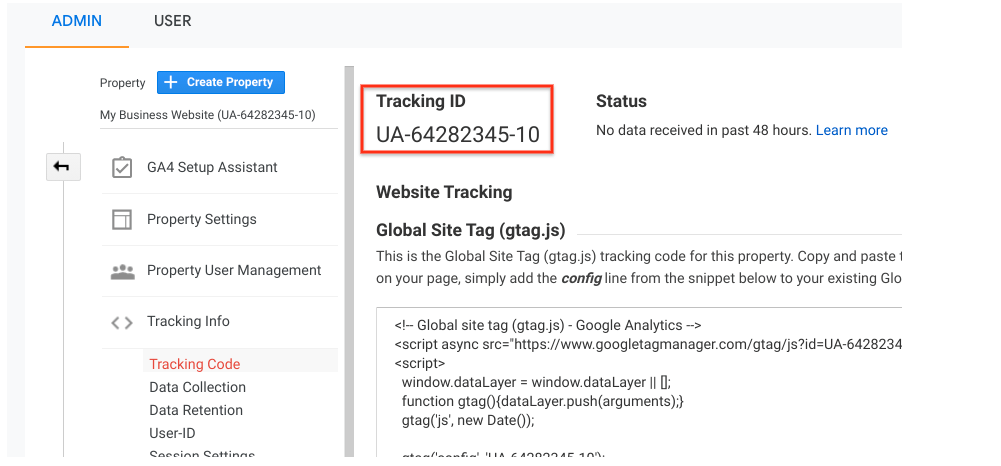Understanding Google Analytics: What Data Does Google Analytics Prohibit Collecting?
Understanding Google Analytics: What Data Does Google Analytics Prohibit Collecting?
Blog Article
Grasping the Art of Overcoming Data Collection Limitations in Google Analytics for Better Decision-Making
In the world of electronic analytics, the capacity to extract meaningful insights from data is vital for informed decision-making. By utilizing sophisticated techniques and strategic methods, organizations can boost their data quality, unlock hidden understandings, and pave the method for even more enlightened and reliable decisions.
Data High Quality Analysis
Analyzing the quality of information within Google Analytics is a vital action in making sure the reliability and precision of understandings derived from the collected details. Data quality analysis includes evaluating various facets such as accuracy, efficiency, consistency, and timeliness of the information. One crucial element to take into consideration is information precision, which refers to exactly how well the information reflects real values of the metrics being measured. Incorrect data can cause defective verdicts and illinformed business choices.
Efficiency of data is another critical variable in analyzing data high quality. Consistency checks are likewise crucial in data quality analysis to determine any discrepancies or anomalies within the information set. By focusing on information top quality evaluation in Google Analytics, services can improve the reliability of their analytics records and make more educated decisions based on precise understandings.
Advanced Tracking Strategies
Making use of advanced tracking methods in Google Analytics can dramatically enhance the depth and granularity of information accumulated for more extensive evaluation and understandings. One such method is occasion tracking, which permits the tracking of particular interactions on an internet site, like clicks on switches, downloads of documents, or video clip sights. By applying occasion monitoring, organizations can gain a deeper understanding of individual actions and engagement with their on-line material.
Furthermore, custom-made dimensions and metrics provide a means to tailor Google Analytics to particular business needs. Personalized dimensions enable the creation of new data points, such as customer roles or consumer segments, while custom metrics allow the monitoring of unique efficiency indicators, like revenue per individual or typical order worth.
Additionally, the usage of Google Tag Supervisor can simplify the implementation of tracking codes and tags across an internet site, making it simpler to take care of and release advanced tracking configurations. By taking advantage of these sophisticated tracking techniques, organizations can unlock important insights and enhance their on-line strategies for far better decision-making.
Personalized Measurement Execution
To improve the depth of information collected in Google Analytics past innovative tracking strategies like event monitoring, organizations can execute customized measurements for more tailored insights. Personalized measurements enable organizations to define and accumulate particular information factors that relate to their special objectives and purposes (What Data Does Google Analytics Prohibit Collecting?). By assigning personalized dimensions to various elements on a site, such as user communications, demographics, or session information, organizations can get a more granular understanding of exactly how customers involve with their online properties

Acknowledgment Modeling Strategies
By using the ideal acknowledgment design, services can properly attribute conversions to the suitable touchpoints along the client journey. One common attribution version is the Last Communication model, which offers credit for a conversion to the last touchpoint an individual communicated with before converting.

Information Tasting Avoidance
When dealing with big volumes here are the findings of data in Google Analytics, getting rid of information sampling is important to make certain exact insights helpful hints are derived for notified decision-making. Data sampling takes place when Google Analytics estimates patterns in information instead of analyzing the full dataset, potentially bring about manipulated outcomes. To prevent information tasting, one effective approach is to lower the date array being assessed. By concentrating on shorter time frameworks, the possibility of running into experienced information reductions, giving a much more exact depiction of user behavior. Additionally, using Google Analytics 360, the premium variation of the system, can assist mitigate tasting as it enables greater information limits before tasting kicks in. Applying filters to limit the data being assessed can additionally assist in staying clear of tasting issues. By taking these aggressive actions to lessen information sampling, companies can remove more exact insights from Google Analytics, bring about far better decision-making and boosted general performance.
Verdict
In verdict, mastering the art of getting rid of information collection restrictions in Google Analytics is crucial for making notified decisions. By performing a complete data high quality analysis, implementing sophisticated tracking methods, utilizing customized measurements, utilizing acknowledgment modeling techniques, and preventing information tasting, businesses can guarantee that they have exact and trustworthy information to base their choices on. This will inevitably bring about more effective approaches and much better outcomes for the company.

Report this page